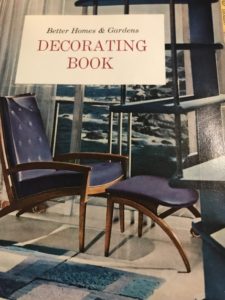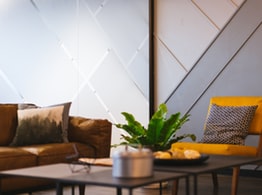
“You do know more about color than you think. The same principles you use to coordinate dress, shoes, hat, gloves, and accessories are easy and fun to apply to color in your home.”
how were people using color in 1961?
While styles have changed dramatically, this Better Homes and Gardens book on decor is still amazingly relevant today. That’s because color advice based on scientific principles is timeless.
The chapter on color is pretty lengthy, so I’ll just show a few specific sections for our purposes.
On facing pages, they include a color wheel – quite helpful.

